The notion that Alaskan pollock are a sustainably caught fish took a mighty blow last week when the National Marine Fisheries Service closed the Gulf of Alaska pollock trawl fishery after a pair of midwater trawlers reported the bycatch of 2,000 increasingly rare Chinook salmon in a single day.
And it’s not an isolated incident. According to the advocacy group SalmonState, observed salmon bycatch numbers in the Gulf of Alaska report that nearly 35,000 chinook salmon, almost 45,000 chum salmon and nearly 4 million pounds of halibut have been snatched up by trawl nets so far this year. Additionally, more than 800,000 crabs and 3 million pounds of Alaskan herring have also been observed as bycatch on pollock trawlers.
“This is a wake up call for all Alaskans," said SalmonState Executive Director Tim Bristol. “Thankfully the vessel that caught these salmon had electronic monitoring on board, but what would have happened if it was one of the majority of the boats fishing the Gulf of Alaska without human or electronic observer coverage?”
In recent years, only about 32 percent of boats trawling in the Gulf of Alaska have had observer coverage. That leaves many opponents of continued pollock trawling in the Gulf of Alaska concerned that reported bycatch numbers are but a sliver of the actual total of untargeted fish caught and killed in trawl nets.
As of last week’s closure, the Monterey Bay Aquarium’s Seafood Watch listed Alaskan walleye pollock as a sustainable fishery. On its website, SW’s “pollock buying guide” recommends consumers buy Alaskan walleye pollock so long as it's clearly labeled as “caught in Alaska.” Hatch Magazine contacted Seafood Watch through its website and asked if a change in the organization’s recommendation was forthcoming in the wake of the NMFS pollock fishery closure. As of publication, there has been no response.
Alaskan pollock is a very common fish on menus across the United States. Chances are, if you’ve had a fish sandwich from just about any fast-food restaurant — like McDonald’s filet-o-fish sandwich, for instance — you’ve eaten Alaskan pollock. Amongst many other uses, pollock is commonly used in producing fish stocks, fish meal, imitation crab meat, fish sticks, and is sometimes used as an alternative to cod or haddock to make fish and chips.
News of the closure was welcomed by advocacy groups, recreational fishing lodges, tackle dealers and even seafood restaurants that insist on serving sustainable products to customers.
“In a time when local Alaska fisheries are trying to survive on continuously decreasing allowable catch limits of salmon and halibut, it is well overdue that the largest destroyer of Alaska’s finest seafood species is held accountable,” said Scott Van Valin, owner of El Capitan Lodge, a recreational fishing lodge on Prince of Wales Island in Southeast Alaska. “There is no getting around the fact that the substantial bycatch levels of salmon, halibut and crab by the trawl fleet is unsustainable to the resource and comes at the expense of every other user group that participates in Alaska fisheries. It’s time for significant change.”
The closure was announced by the NMFS on Sept. 25 by a simple decree, and aimed at boats that use trawl gear to catch pollock.
“The National Marine Fisheries Service (NMFS) is prohibiting directed fishing for pollock by vessels using trawl gear in the Central Regulatory Area of the Gulf of Alaska” through the end of the year, the service declared. The order, given by Jonathan M. Kurland, regional administrator of the NMFS’s Alaska region, is intended to keep the commercial pollock fishery from exceeding the 2024 bycatch limit for Chinook salmon.
The king salmon population across Alaska has declined steadily since the turn of the century. In recent years, chinook runs in the Yukon-Kuskokwim river drainage have dramatically declined. In April of this year, at the North Pacific Fishery Management Council meeting in Anchorage, SalmonState delivered more than 700 comments from Alaskans expressing their alarm over the chinook bycatch reported by observers on pollock trawlers.
“The Bering Sea is an ecosystem, not a pollock factory, and it’s past time it be managed that way,” Bristol said at the meeting. “Traditional, subsistence, small-boat and directed fishermen should not be bearing the burden of conservation for a problem they did not create while the pollock trawl fleet continues with business as usual.”
And the salmon bycatch isn’t something that’s just now rearing its head. In a 2021 bycatch management guide from the NMFS, it was reported that 141 million pounds of salmon, halibut, crab and herring are caught and discarded every single year as bycatch. As salmon populations in the Yukon-Kuskokwim basin have plummeted — leaving subsistence fishermen without fish — the pollock fishery has continued trawling. What’s more, the “midwater” trawlers were actually found to be fishing closer to the bottom, or even on the bottom of the ocean most of the time.
“While it should never have had to come to this level of crisis,” said Troy Arnold, owner of B&J Sporting Goods in Anchorage, “it is good that the National Marine Fisheries Service is finally recognizing these boundaries and the value of salmon to Alaskans, and asking the trawl fleet to stand down as thousands of us Alaskans have had to do in the name of salmon conservation in recent years.”




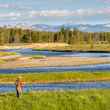

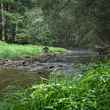




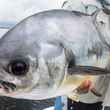
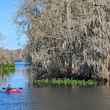




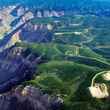



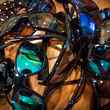
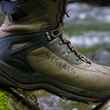



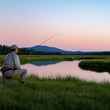
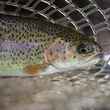



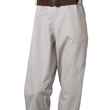
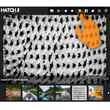
Comments
Doug Balfour replied on Permalink
That is great news. Trawlers need to develop a better way of fishing, other than just catching beverything there is out there.
Steve Matter replied on Permalink
Thanks for taking action.
Pages